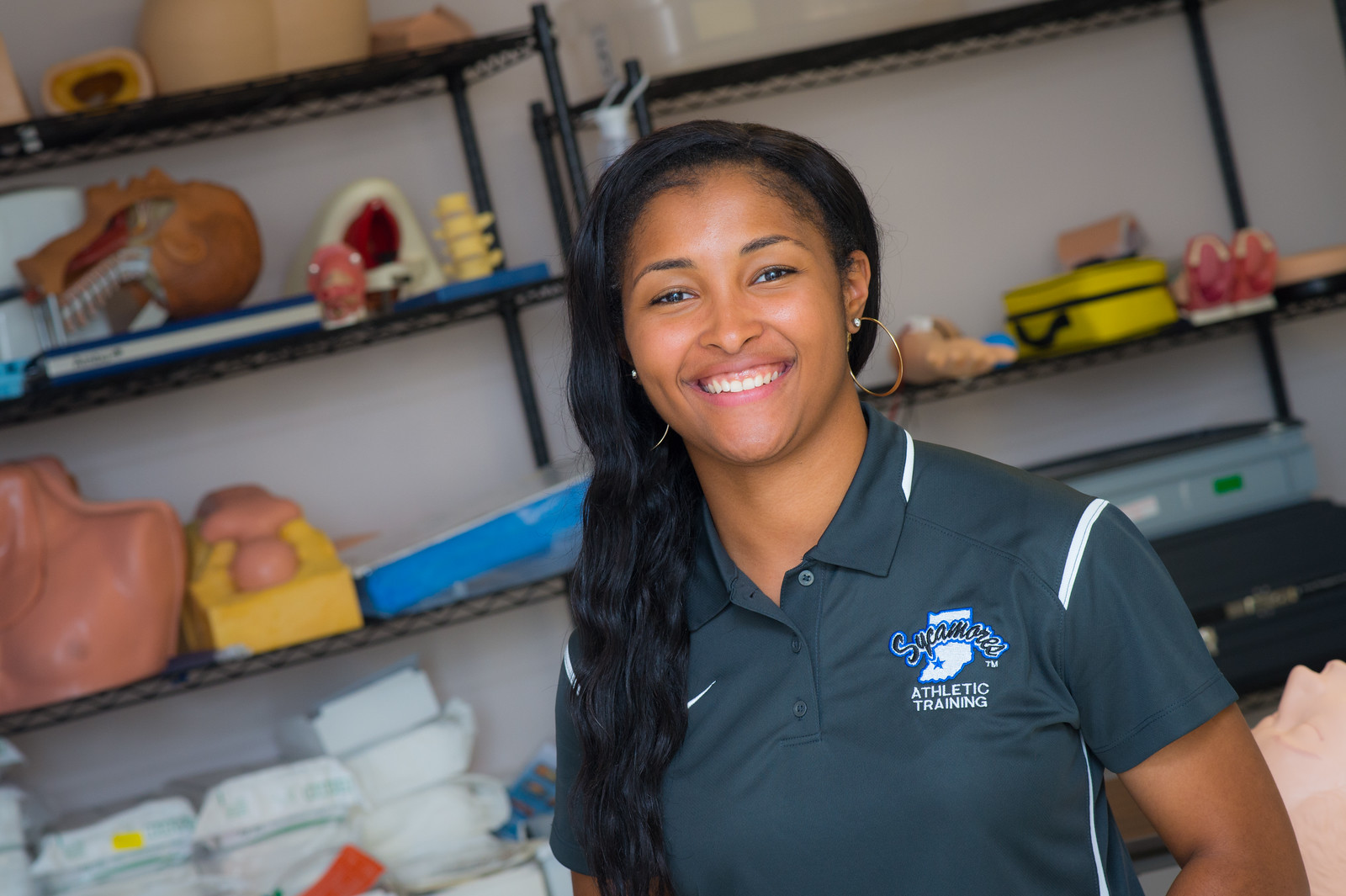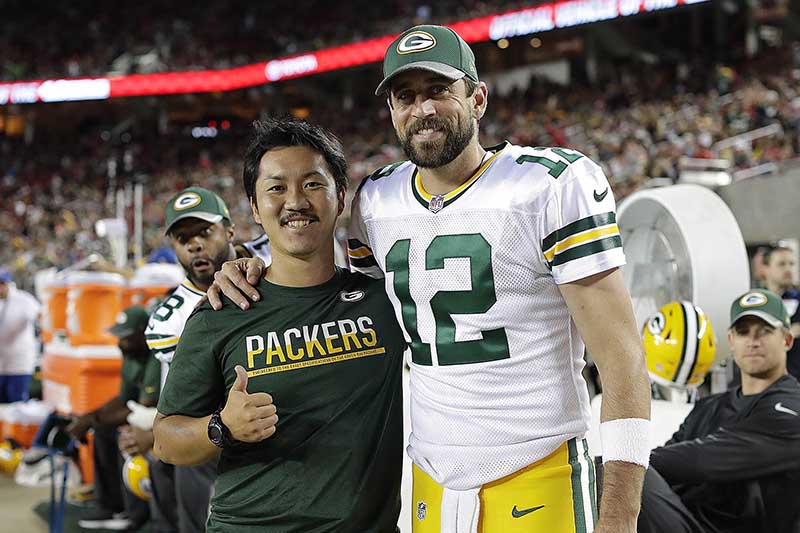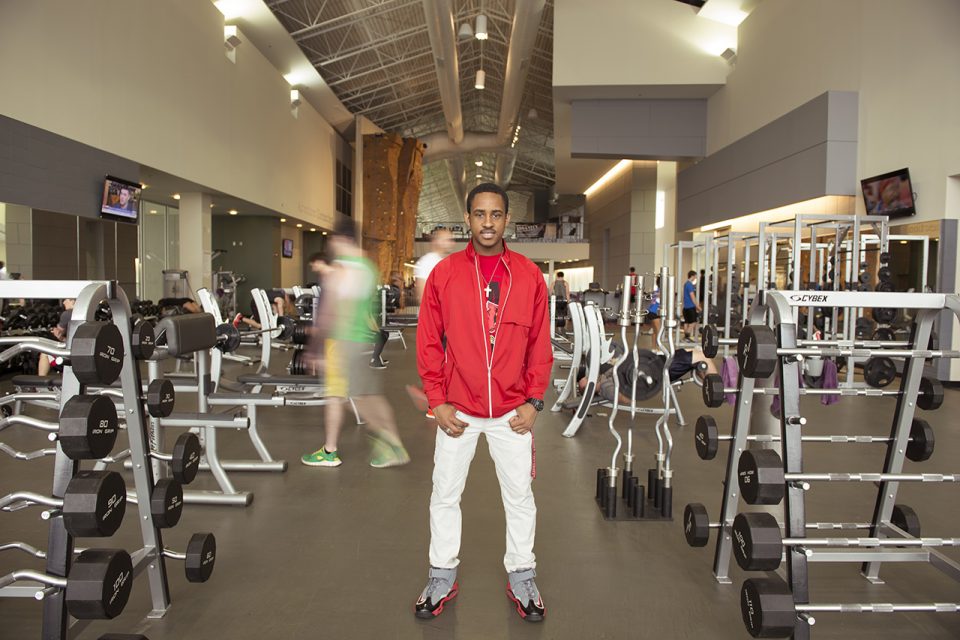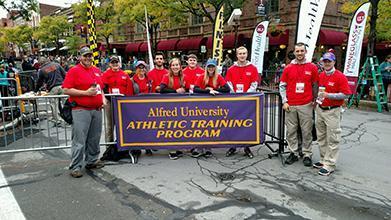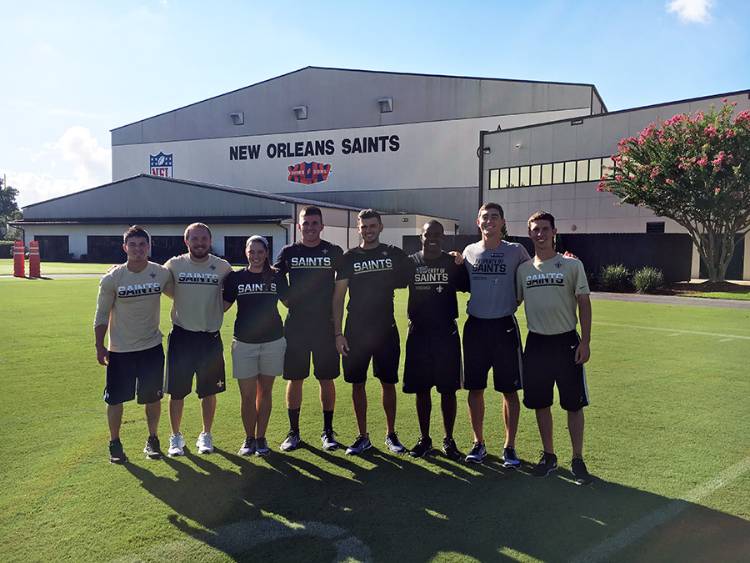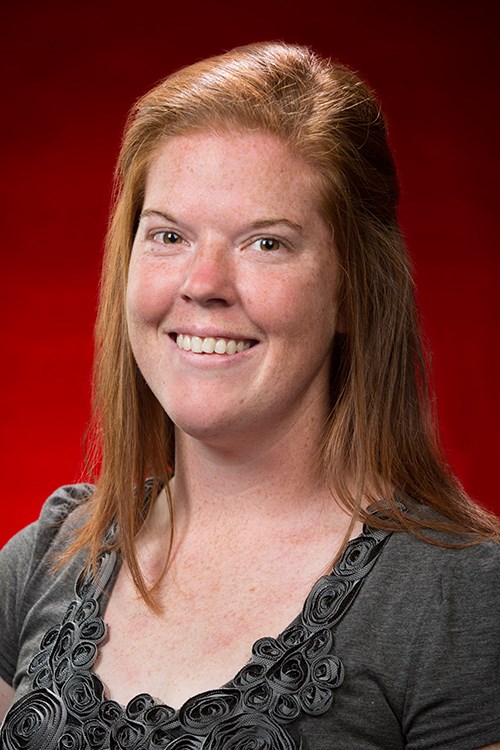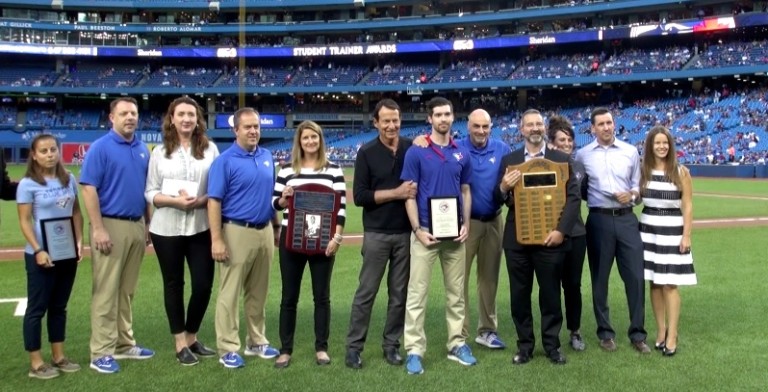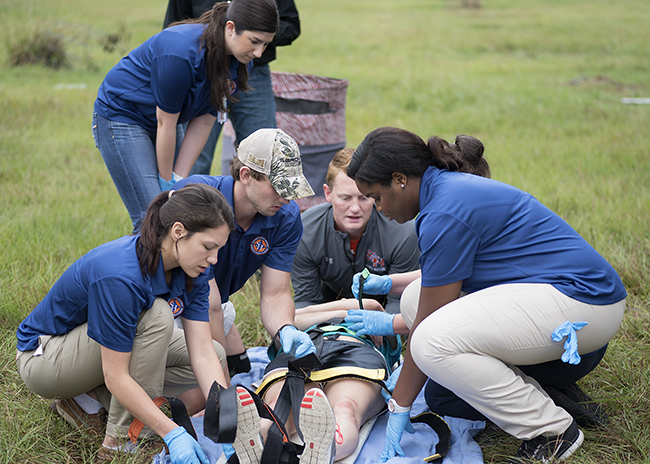
Article reposted from Sam Houston State University
Author: Tricia Sims
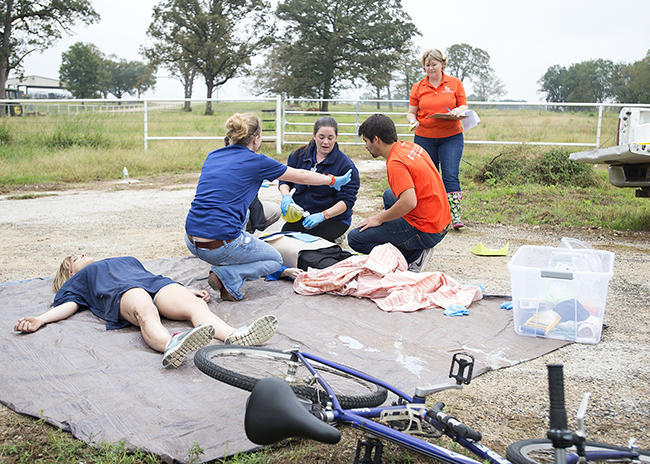 |
| Understanding the importance of critical care and inter-professional education, the SHSU School of Nursing and athletic training program teamed up to simulate five emergency situations during which students would have to work together to treat patients. Above, students discuss the treatment of a woman who crashed her bicycle and received a severe head injury. —Photos by Brian Blalock and Michael Ray |
She could hear her heart beating fast in her ears while her adrenaline spiked. All she could think was just remember: green-minor, yellow-delayed, red-immediate…green, yellow and red.
She, along with the other students around her, was nervously standing in anticipation for the next scenario. The next 20 minutes would bring more sweat on the brow and a nervous feeling in the pit of the stomach as these students learned how to save as many lives as possible.
The group stepped up to a new scenario. A bull had escaped during a rodeo and had his “hey day” on unsuspecting people who were enjoying a fun-filled day at a carnival. Arriving at the scene, students saw at least 10 people lying down-some crying out, some barely moving, and one dead.
“There were several casualties and many who needed immediate care,” Sam Houston State University nursing student Aimee Shearn said. “Our job was to first clear the scene and make sure the bull was captured. The next objective, once the scene was clear, was to triage the victims. We have a system we utilize called simple triage and rapid treatment. We rapidly assess the patient and prioritize what needs to be done.”
 |
| Working in groups of six, students had to communicate with each other in scenarios that included everything from mass casualties, to traumatic injuries, to unfamiliar ailments. |
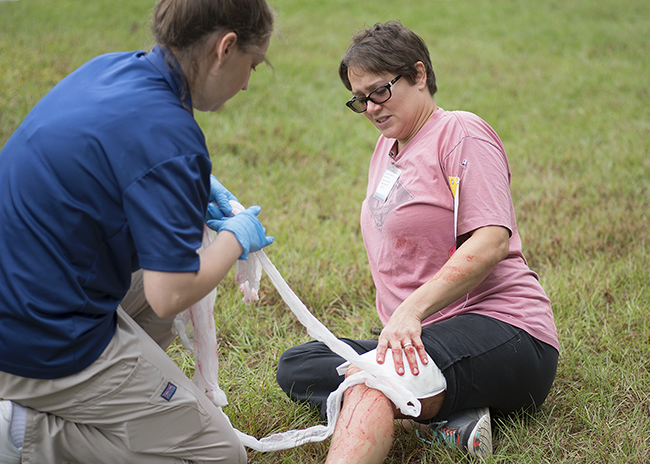 |
This traumatic situation was one of five created for an emergency care simulation for SHSU nursing and athletic training students. The simulation was organized to prepare students for emergency health care crises and took place at Gibbs Ranch, with five groups of six students participating.
According to assistant professor of kinesiology and athletic training program director Mary Williams, 15 years ago, the Institutes of Medicine published several core competencies that they recommended for health care programs. One of those core skills is called inter-professional education which is the practice in when all health care students and professionals work together to treat patients rather than separately.
The simulation was a way to teach the students clinical skills and give them a chance to use inter-professional education.
“In many cases patients get referred to multiple people, you have many people coming in and out,” Williams said. “You can’t provide quality health care without numbers. You have to have people from all different kinds of disciplines work together to get the patient what they need.”
The five different situations at the training simulation included the results of a tornado; a bull that had gotten loose at a rodeo; a rodeo competitor who had been thrown from a bull; a mom who crashed her bicycle outside a school without a helmet, resulting in a severe head injury; and people who had heat illnesses at a marathon.
Clinical assistant professor in the nursing program Linda James said the training gave students a chance to see the other field’s tactics and made them realize how important working together is in saving lives.
“In reality, a response to mass casualty situation and other emergencies involves many other disciplines,” James said. “This allowed students the opportunity to work with another discipline in another setting. In the end, each group of students taught the other something, demonstrating the importance of teamwork.”
Athletic training student Cheyanne Goyen, who also participated in the training, said she learned the power of asking for help and how working together as a team can truly help the patients get the best care.
“I came across a girl who couldn’t feel her lower half and as I looked over her body, I saw she had a bruise all along her back,” Goyen said. “Not being familiar in this situation as an athletic trainer, I called one of the nursing students over to help me.
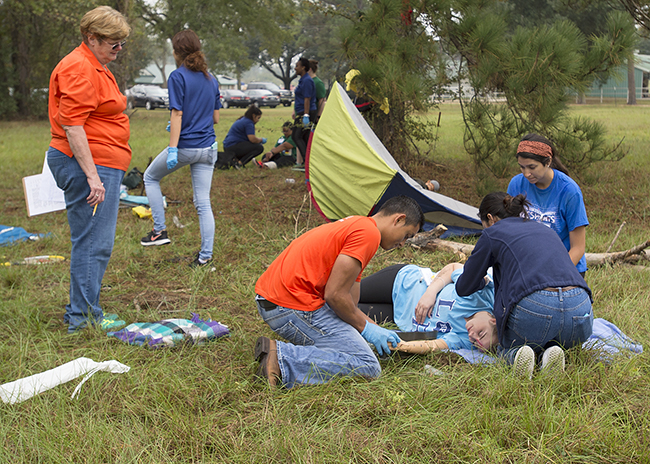 |
| A professor assesses students’ response to a person injured in a tornado during the simulation training at Gibbs Ranch. |
“When they saw the bruise, they came to the conclusion together of it being internal bleeding. So they told me to get a thick blanket we had on hand to keep her up right and in the recovery position.”
The training situations also taught the students that communication is vital for patient success.
“We were expected to prioritize, delegate and implement safety at each scenario,” Shearn said. “I learned that collaboration and communication is the key in a disaster situation. The team has to communicate and work together to have the best possible outcome.”
By making a team up of people who do not normally work together, the simulation challenged the students and kept them motivated to learn from each other.
“It was great getting to work with people outside of the athletic training profession,” Goyen said. “I was able to see different ways to assess and handle situations from a nursing side of things. It is important to be taken out of your comfort zone and work with people you’re not familiar. Having everyone work together made this a fun learning experience.”
Perhaps most importantly, the session was a great example of conditions that both types of students will encounter in the future, according to Shearn.
“This simulation is instrumental in training as the event provides and enables us to analyze what would happen in a similar situation,” she said. “We must as health professionals be able to reflect on this scenario to practice toward strengthening our skills in these circumstances.”
